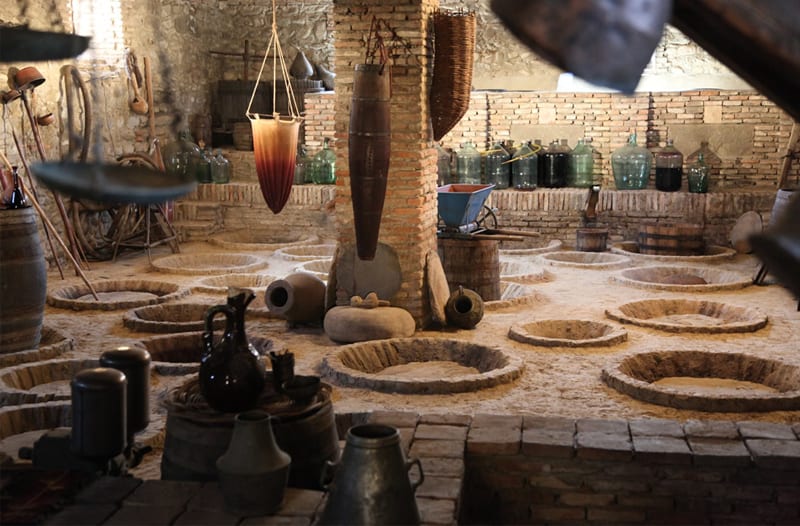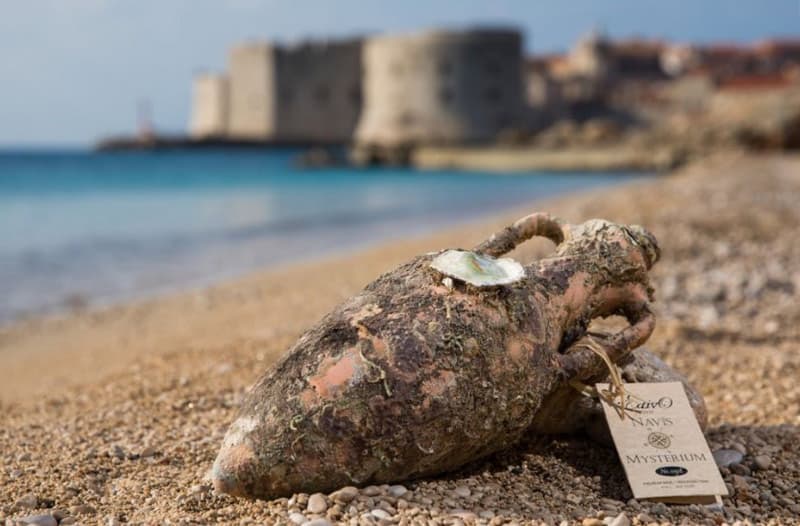The history of wine bottle
In July, a German design company launched the first double-layered wine bottle. Cooleo, as it is called, can supposedly keep wine cold without putting it back into the fridge as its double-walled design functions as an insulator.

German winery Wasem was so impressed by this product that it immediately ordered 6,000 bottles to house its Pinot Noir rosé and dry Riesling. This brings the question: What was there before the glass? Or, more precisely, how did the wine bottle we know today come to be?

Conditions that needed to be met
We all love the variety of flavors wine brings to our taste buds as it can give us an immense connection, not just to centuries of tradition and innovation by winemakers from all around the world, but also to the incredible landscape those vineyards are located in. However, transport and storage of wine play a vital role in keeping this connection alive since, without them, those flavors would be lost by the time they reached our tables.
So, what are the conditions a wine bottle needs to meet?
Firstly, air must be kept out of the vessel to prevent oxidation. Secondly, the vessel must be strong enough not to easily break, without being so heavy that it cannot be easily moved.
Lastly, the vessel itself shouldn’t interact with the wine so that it doesn’t alter its flavor, however, as we will see, this was not always the case.
In the beginning, there were earth and clay
Before wine met glass, it was stored in clay vessels, more precisely in kvevri and amphoras.
Kvevri or qvevri were large, beeswax coated, earthenware vessels used by Georgians as early as 6,000BC and are officially the oldest storage vessels we’ve discovered to date. Used from grape crushing to aging, these incredible devices gave earthenware-aged wine that was highly tannic, and, although the tradition was abandoned for centuries, some Georgian and Italian winemakers are bringing it back to life. Some of them are Friulian winemaker Josko Gravner, Italian winemaker Elisabetta Foradori, and Austrian winemaker Bernhard Ott, so if you wish to taste the wine for yourself, try their Qvevri wine and enjoy millenniums of tradition being reborn.

Amphoras or amphorae were wax-lined (pine and beeswax were common) ceramic containers, invented by the Egyptians, that were gradually adopted by nearly all the wine drinking and producing civilizations throughout the Mediterranean and Mesopotamian regions. However, they reached their peak in usage and standardization in ancient Greece and Rome, which is the point in time most wine lovers know about.
Their shape – round with a tapered bottom, two handles and a long, slim neck – served several purposes: the tapered bottom allowed sediment to collect and the amphora itself to be easily buried when cooler, long-term storage was called for; the handles eased the load of carrying them, whereas the long slim neck reduced the surface area of wine that would be exposed to oxygen.
Not just that, but they also fit into ships of the day which made for a means of easy transport. Initially sealed with leaves and reeds, it was the Romans who experimented with rags, wax and today’s favored stopper, cork.
This tradition is also being rediscovered by winemakers who swear to a certain freshness in wine flavor that comes from wine aging in it. Several Croatian winemakers have adapted this winemaking method, so, if you’re willing to explore this arena, try the 2009 Malvazija Amfora or the 2008 Tomac Amfora and connect with the ancient world.
One Croatian winery took this process to a whole other level of innovation and decided to make an underwater winery. Winery Edivo decided to combine tradition, sea, and wine to offer wine lovers from all around the world something extraordinary. They poured the wine into a glass bottle which was then put into an amphora, but not just that.
The amphoras are then submerged into the sea to a depth of 18 to 25 meters where they stay for more than 700 days. Only then are they brought back to the surface for men to enjoy the taste of the wine and for those moments feel like Ancient Greek gods.

The transition to wood and glass
The usage of oak barrels for storage of wine as we know today was also an invention of the ancient Romans. While conquering numerous cultures, the Romans looked for an as easy and practical way to transport wine not just by the sea, but also by land. When they encountered the Gauls, they found a solution to their problem as the Gauls used this method for storage and transportation of beer.
Soon, the Romans realized that each type of wood affects the wine differently in terms of flavor and tannins. This was due to the fact that, unlike clay, wood barrels were porous, allowing some oxidation to occur, and, although oak barrel aging is fundamental to the production of many vines today, their discovery was pure luck as it was only over the next few centuries that it was noticed that oak had a positive effect on wine.
It was only in the 17th century that glass was introduced into the wine industry. Many consider Sir Kenelm Digby, a controversial adventurer, privateer, and alchemist, to be “the father of the modern bottle.” At first, the bottles had fat bottoms and short necks, but, over time, the neck grew and lengthened while the bottom slimmed, and by the 1820s their shapes resembled modern wine bottles. In 1821, a company called Rickets of Bristol received a patent for a machine that manufactured identically sized bottles, in a shape, we would recognize.
While bottles are stylistically varied today, standard bottles hold 750ml of wine. Slightly larger and smaller bottles, following regional traditions still exist, but their usage has become increasingly rare.

Present-day status
In 2006, some marketers were thinking outside the bottle and started using bag-in-box and aseptic packaging for everyday-type wines. Not just that, but in 2016 the Niagara-on-the-Lake winery launched a sparkling wine in a can. One must wonder what Sir Digby would have to say about it if he were alive.
However, one must seriously doubt that glass wine bottles will ever be replaced. Simply put, glass portrays a premium image for wine and allows for this precious liquid to sell at a higher price. What remains is to see how the glass will evolve. This year it became double-layered. Next year – who knows? Only time will tell.



















